Dublinia
The Dublinia exhibition and the story of the Vikings in Ireland
The first known Viking raid on Irish shores happened in 795AD on the island of Rathlin, just off the northeast coast. This kicked off several centuries of conflict involving the native Irish and Scandinavian raiders. However, the story is in NO way as black and white as some historians would lead you to believe. Indeed, the raiders integrated into the intrigues of the country almost immediately and are the founders of various Norse-Gaelic Irish clans. One great structure the Northmen built was Christ Church Cathedral in Dublin, a city which they also founded. Here, you can see the Dublinia exhibition and learn more about the Viking contribution to Irish life. You can also learn about the later Norman conquest, themselves Francophone descendents of the Vikings.
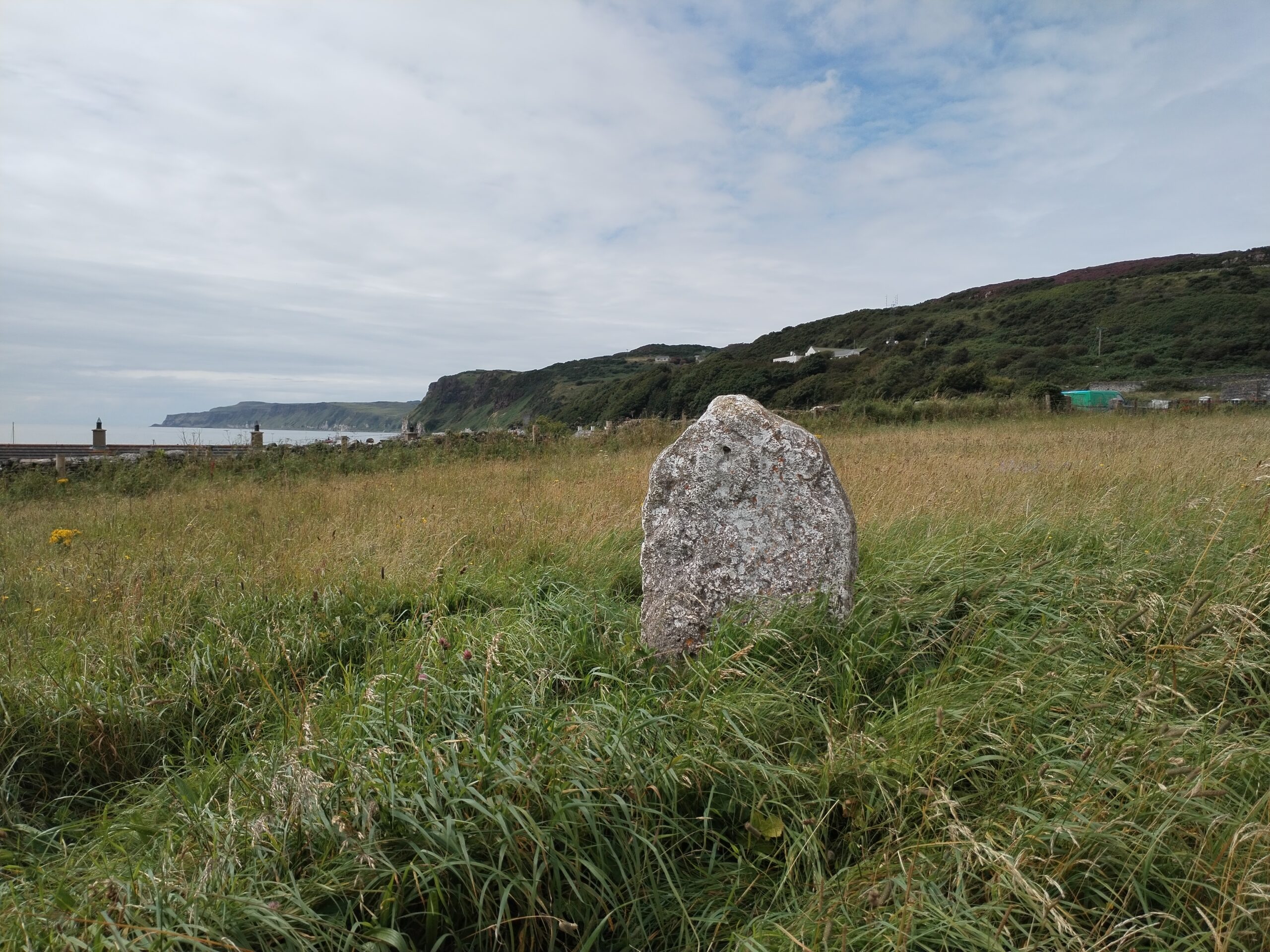
A Viking Gravestone on Rathlin Island, off the northeast coast of Ireland
Christ Church Cathedral
The modern Christ Church Cathedral is an impressive stone structure. Originally wooden, it was rebuilt in stone at the dawn of the Norman era in Dublin. It is the host of our destination and before it was stone, it was a wooden structure, probably in the style of the great wooden churches seen across Scandinavia. This is because surprisingly, it was built by Vikings who had increasingly become Christian by the time of its construction.
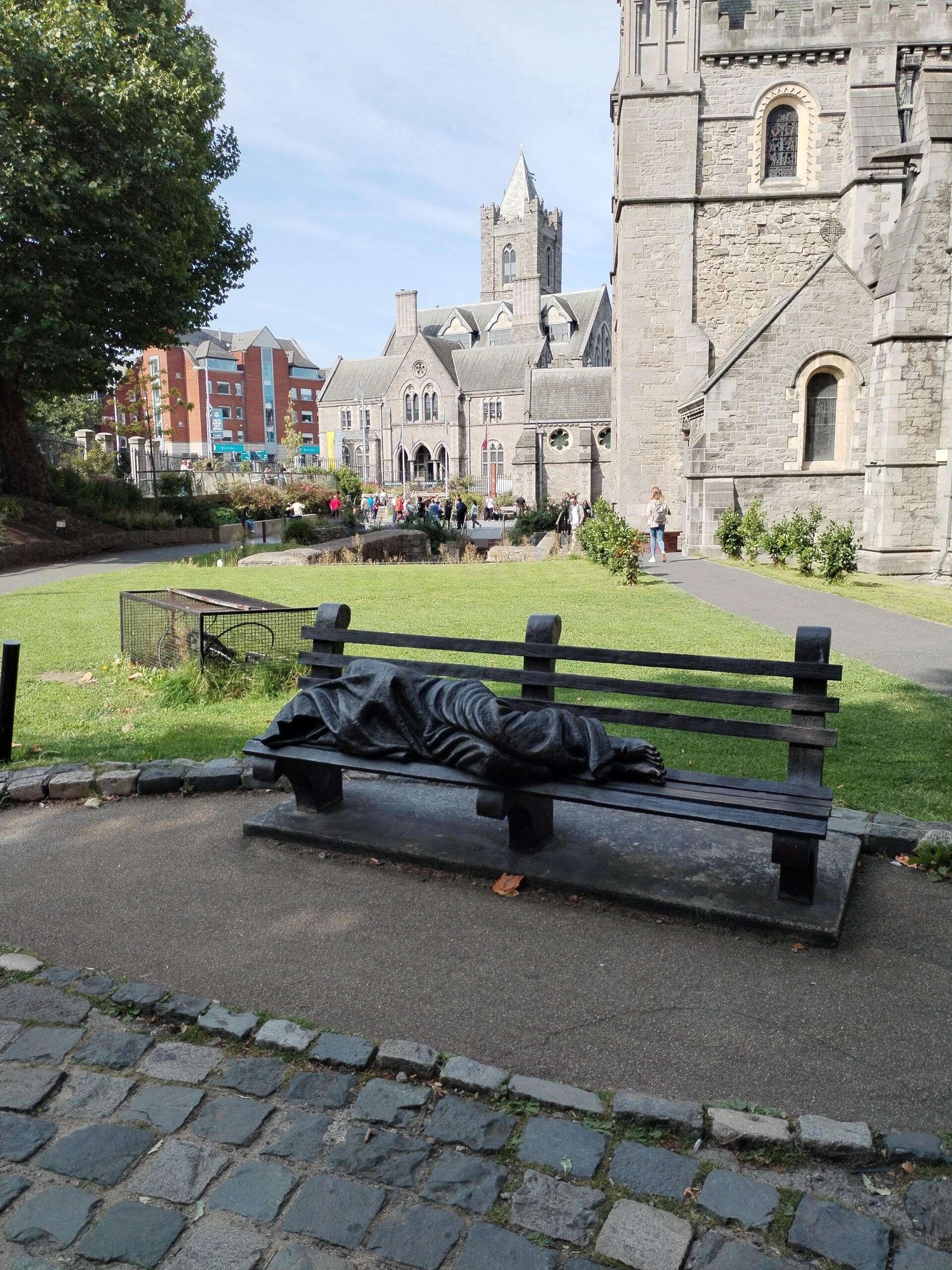
A representation of Jesus as homeless, in the gardens of Christ Church Cathedral, in Dublin. Click the image to read more on the poignant sculpture
Escape from Temple Bar!
Christ Church is at the western end of the Temple Bar area, so getting through the area without bankrupting yourself can be a challenge. The prices in the area have gone mad over the years, though I remember a time in the 1990s when it wasn't so bad. The bars here are truly beautiful to admire from outside, mind you. However, I suspect a few tourists understand the price issue as there seem to be groups of people taking snaps of pub facades before moving on without entering.
I've generally operated a policy of going to northside bars to look for a cheaper deal, with relative success. Lower Abbey Street and Talbot Street are good locations with nice bars and gastropubs. They are just off O'Connell Street, within sight of the GPO, so these streets are worth searching along.
Since COVID, prices have gone up everywhere but this isn't the only reason. Prices in the Republic of Ireland have gone up and up steadily over the years, so remember to save up before visiting. Therefore, our walk to the cathedral through Temple Bar is brisk, with photo opportunities but zero stopoffs.
The Dublinia exhibition
The Cathedral complex crosses over the top of Winetavern Street by means of a causeway. It is this part of the cathedral that hosts the Dublinia exhibition. The Dublinia exhibition, and its version of history, more rooted in reality and archaeology, might surprise you when thinking of the Northmen.
In the halls of Valhalla?
The Vikings have a bit of a reputation, even now and over a millenium after their heyday of sacking and pillaging. Ferocious followers of Odin swinging axes around during monastery raids didn't endear them to the Gaelic Irish. That said, they brought more culture to the land than many give them credit for.
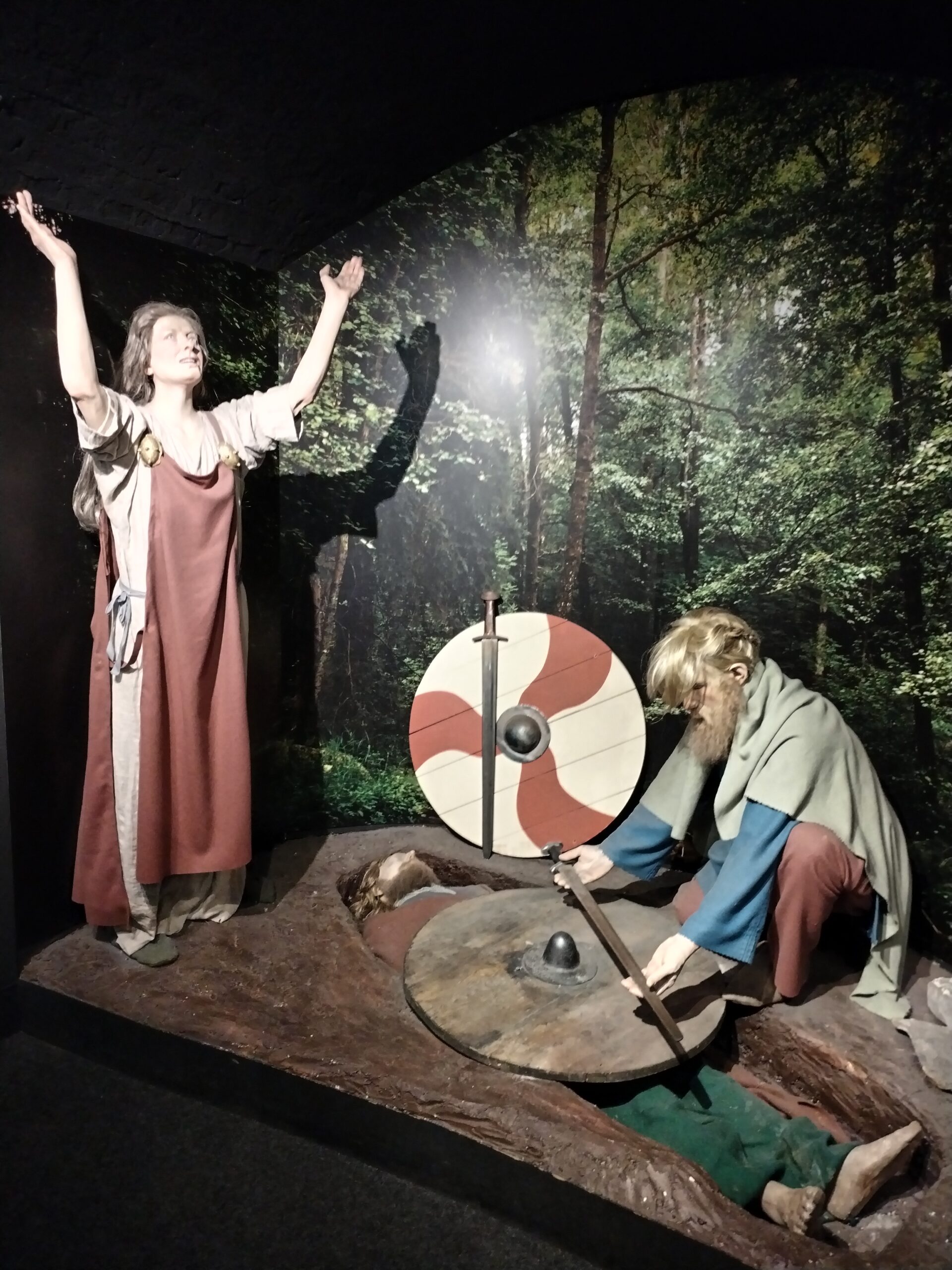
A representation of a pre-Christian Viking burial
They were in fact the founders of the first cities including Dublin, in 841 AD, and as we've mentioned, the first cathedral in Ireland. Christchurch Cathedral remembers its Norse heritage, so the Dublinia exhibition presents a much more nuanced version of Norse-Gaelic history than the standard idea of good Irish versus marauding slaughtering sea raiders. It was originally a wooden structure which Sitric Silkenbeard commissioned after a pilgrimage to Rome. But who exactly was Sitric and indeed, the Dublin 'Norse'?
Sitric the Christian
Sitric was a long-time king of Dublin, a colony founded by the Norse as a base for launching more inland attacks. Sitric's story is a greyer version of Irish-Norse history than the conventional black-and-white tale. The Norse had originally arrived as foreign raiders about 800AD but many soon struck up alliances with Gaelic Irish chieftains. These military and subsequently marital alliances resulted in the formation of Norse-Gaelic clans. Many of the modern Irish clans descend from the Uí Ímair dynasty, said to be the kin of Ivar the Boneless, son of Ragnar Lodbrok. Scandinavian cultural norms and military tactics also gained some influence in Ireland.
More alliances formed later into the Viking Age as Danes arrived, rivalling the original Norse Vikings, who were from Norway. Meanwhile, many Scandinavians abandoned their native polytheism, becoming Christian.
Sitric was of the Uí Ímair line, and therefore of both Gaelic and Norse ancestry. He also changed sides frequently in the wars and conflicts, being a one-time vassal of Brian Boru. Brian was the Gaelic high king of Ireland who in 1014 on the field of Clontarf ended Viking influence, ending it in the common mind anyway. Sitric's forces fought against Brian here though family politics may have had at least some small part to play in this, as there were marriage alliances between their families. And a few of these marital alliances apparently didn't end well.
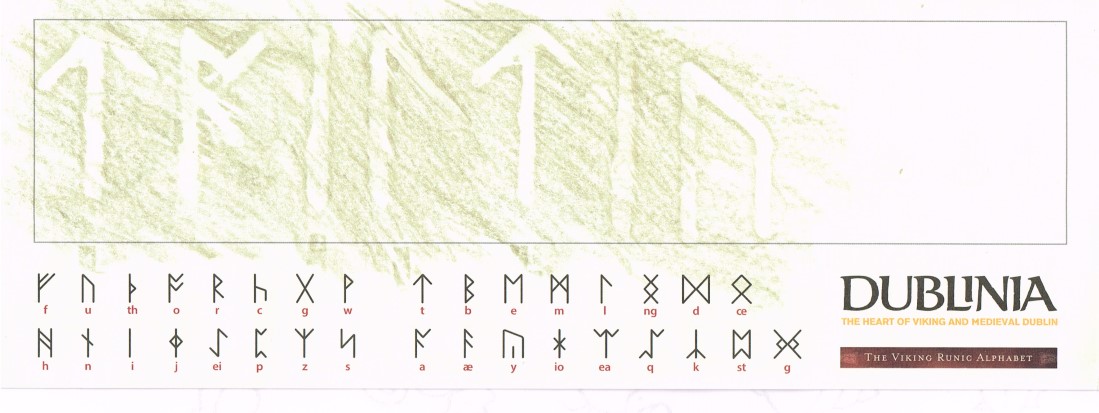
The Gaelic name Tailtiu written in Norse runes
After Clontarf and Brian's victory, which was also Brian's death, Sitric continued to fight and ally himself with other Norse and Gaelic chieftains within Ireland and throughout the Irish Sea until his abdication as king of Dublin in 1036.
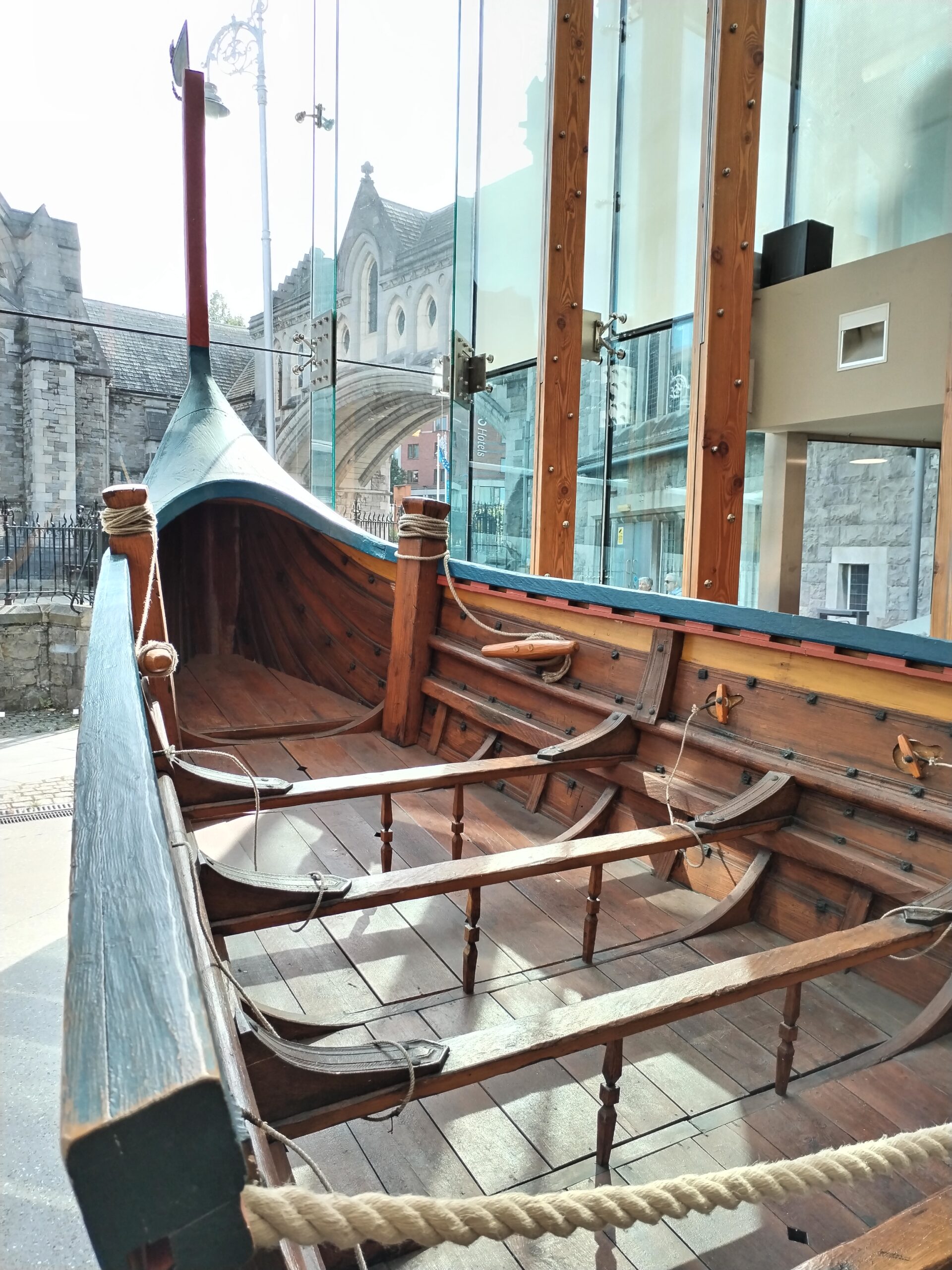
Viking longship in the Dublinia exhibition
Strongbow, the Normans and MacMurrough's betrayal
English intervention in Ireland came in 1169, when Norman forces landed to aid the king of Leinster. This king, Dermot MacMurrough, asked the Norman knight Richard de Clare for help to recover his kingdom after being deposed by rival Irish kings. Richard the Norman is now known by his nickname Stongbow.
How 'English' you might call Strongbow and the Normans of this time is debatable, although he was subservient to the crown of England, which was in Norman hands. The Normans had held England and Wales since 1066, when Saxon rule ended with the Battle of Hastings. However, Normans were French speakers of Norse descent, so the concept of Englishness was still developing. Strongbow was also the Earl of Pembroke, which is at the southwest tip of Wales.
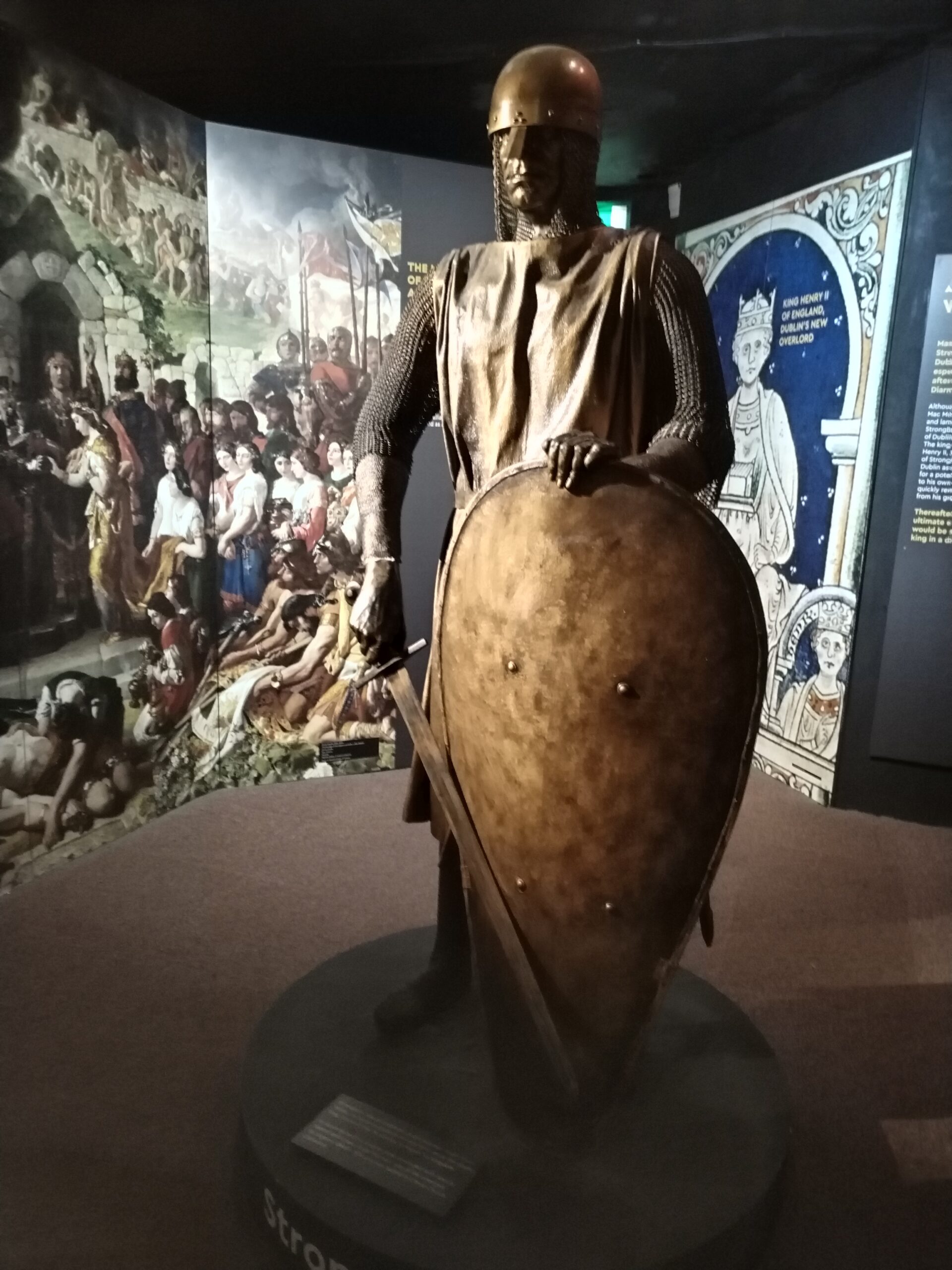
A representation of Strongbow in the Dublinia exhibition
Strongbow seems to have been a conquistador-type figure in the sense that a few of the Spanish went forth into new territory without their king's express permission, seeking personal fiefdoms and riches. The Spanish crown stamped on this type of thing in the new world and so did the Normans previous to them. Eventually, the big king followed Strongbow across the Irish Sea, claiming dominion over all of Ireland. This of course, really got the ball rolling on centuries of conflict between the two countries.
Strongbow's body was interred in Christ Church Cathedral, where you can see his tomb. There is debate as to whether it is him as the cathedral's roof collapsed in 1562, destroying the original cask. The current tomb bearing his name has another coat of arms from another unknown knight. Even the tomb effigy, the knight's physical representation sculpted onto the tomb, is of someone else, so confusion reigns. In any case, his influence, legacy and presence are felt across Ireland to the present day. Dermot MacMurrough is also remembered as he who invited the beginning of the end of Gaelic dominion of the homeland.
Heading towards the Medieval era
The Norman and Medieval periods saw Dublin coming very much under the sphere of English influence. Dublin and its surrounding area, known as the Pale, became the part of Ireland most influenced by England. Over the next few centuries, it experienced attacks by a Scottish army led by Robert the Bruce, the Black Death and a 10-year old kid being crowned king of England in the city. This was a plot supported by some Anglo-Irish lords to usurp the newly-crowned Tudors and their grip on the English throne.
Dublin has indeed had its brushes with destiny. The Dublinia exhibition does well to cover this history, running from the first Viking settlement in 841AD to the Elizabethan age.
Booking and prices for the Dublinia exhibition
You can visit the Dublinia exhibition from 10AM-5PM seven days a week and you can check out the museum and prices here. There are combination tickets to see the cathedral too though on our latest visit, we opted just for the Dublinia exhibition. You can check out Christ Church Cathedral here.
All in all, it's a fact-filled tour located in a beautiful piece of architecture in a beautiful city. It's a short walk to the riverside, but remember to keep an eye on the prices.
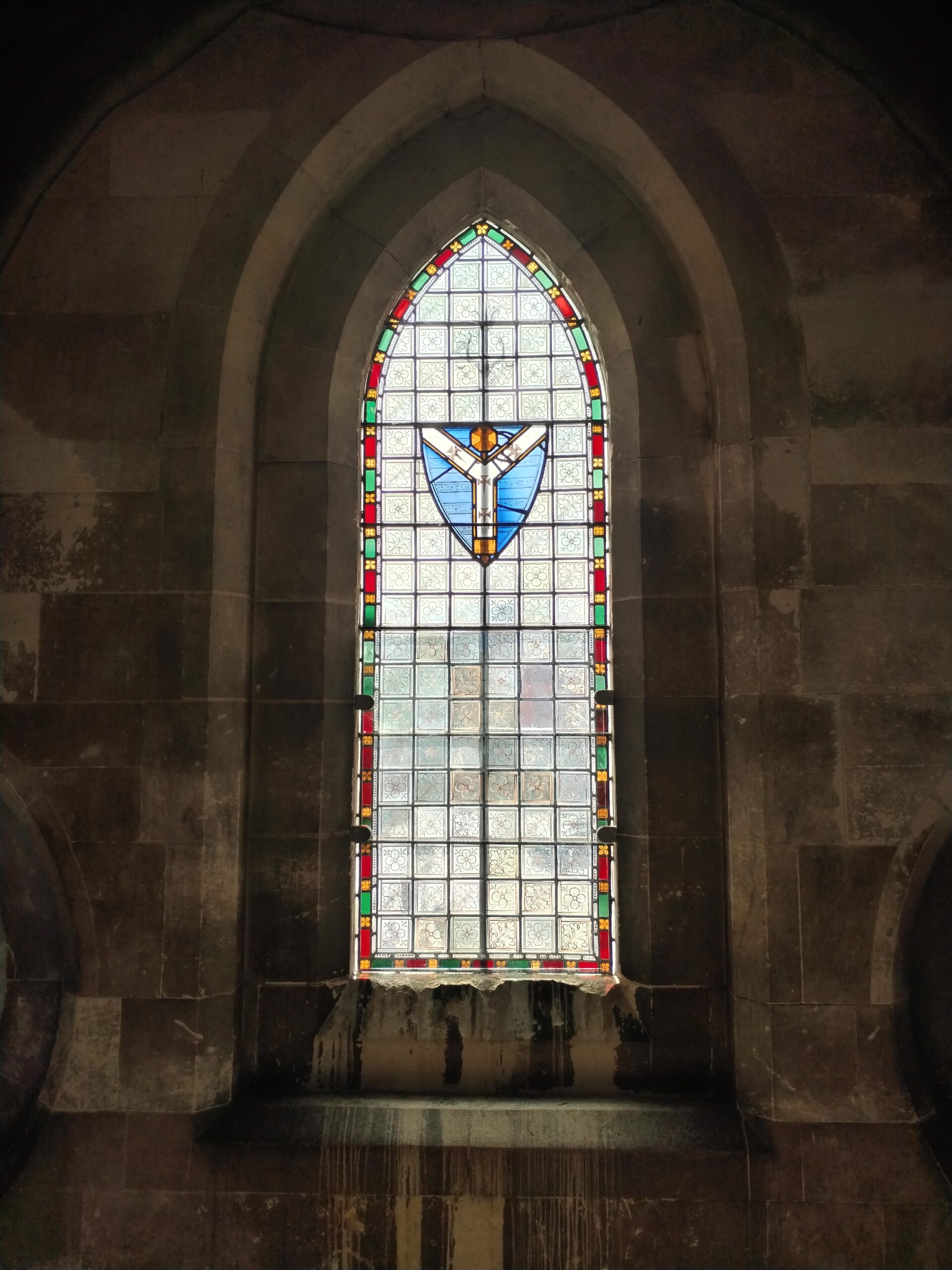
Stained glass in the Dublinia exhibition
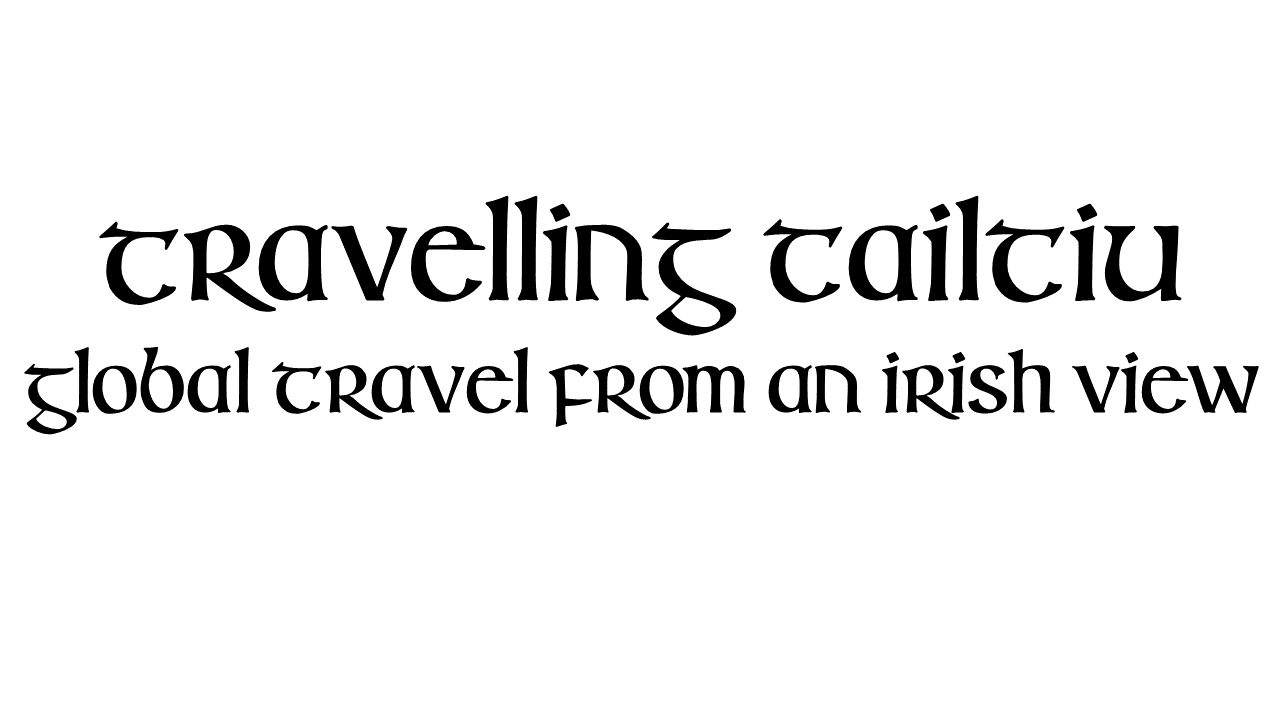
Comments are closed.